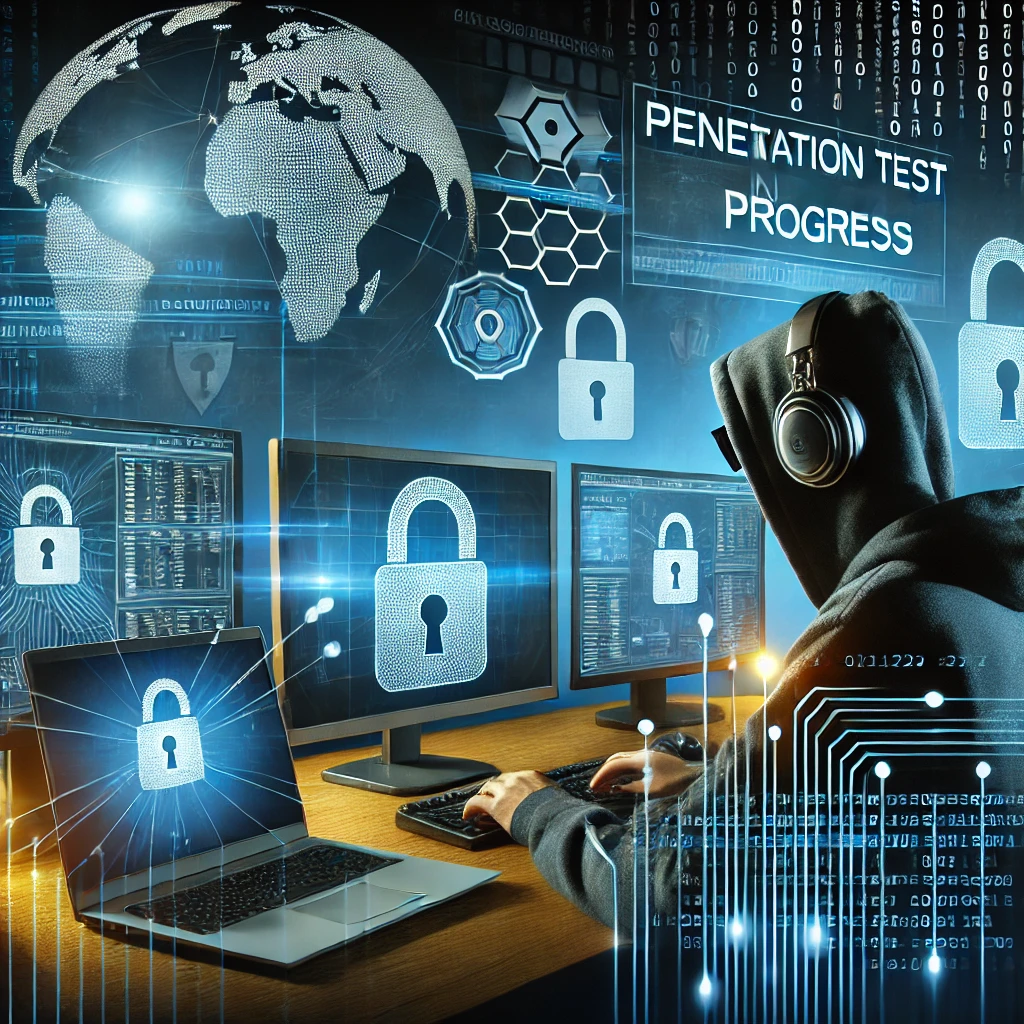- Analyzing Major Incidents Simply
- Understanding Cybersecurity Fundamentals
- In-Depth Analysis of Major Cyber Attacks
- The Human Element in Cybersecurity
- Protecting Critical Infrastructure and Sensitive Data
- Emerging Technologies and Cybersecurity Implications
- Tackling Sophisticated Cyber Espionage
- Creating Robust Security Frameworks
- Understanding the Economic Impact of Cyber Incidents
- Future Perspectives on Cybersecurity Challenges
Analyzing Major Incidents Simply
Cyber attacks have become a major concern for individuals and organisations alike. Recent cyber attacts & lessons learned ensure these incidents show just how vulnerable systems can be, often leading to significant financial and data losses. Understanding these attacks can help in protecting against future incidents and strengthening security measures.

This blog post will explore some of the most notable cyber attacks in recent years. Each case highlights unique methods used by hackers and reveals important lessons learned. Readers will gain valuable insights into how these attacks occurred and how to prevent similar breaches.
By breaking down these events into simple terms, the post aims to clarify the risks involved and the steps needed to enhance cyber security. This knowledge is key for anyone looking to better protect their digital information and infrastructure.
Understanding Cybersecurity Fundamentals

Cybersecurity is essential in protecting data and systems from various threats. Knowledge of key concepts, such as vulnerabilities and security measures, is vital for individuals and organisations alike.
Cyber Threats and Vulnerabilities
A cyber threat refers to any potential danger that could exploit a weakness in a system. Common threats include:
- Ransomware: Malicious software that locks data and demands payment for restoration.
- Phishing: Attempts to trick users into revealing personal information.
- Malware: Software designed to harm or exploit devices.
Vulnerabilities are weaknesses that attackers can target. They often arise from outdated software, weak passwords, or improper configurations. To mitigate these risks, it is critical to keep systems updated and to regularly assess for potential weaknesses.
Security Measures and Best Practices
Implementing effective security measures is essential for protecting information. Key practices include:
- Regular Updates: Keeping software and systems current helps patch vulnerabilities.
- Strong Passwords: Using complex passwords and changing them frequently reduces the risk of unauthorised access.
- Data Encryption: Protecting sensitive information limits exposure during breaches.
Organisations should also establish a cyber resilience plan. This includes preparing for and responding to attacks. Regular training for staff on privacy and data protection is beneficial in building awareness and avoiding common pitfalls.
In-Depth Analysis of Major Cyber Attacks

Recent cyber attacks have highlighted weaknesses in various sectors, especially in healthcare. Attacks like those on Salt Typhoon and UnitedHealth show how serious the threat has become. These incidents teach important lessons about security.
Case Study: Salt Typhoon
The Salt Typhoon attack targeted organisations in critical sectors. This attack involved a group using sophisticated methods to gain access to networks. They relied on spear-phishing to trick employees into clicking harmful links.
Once inside, they gathered sensitive information and sought to manipulate national security data. The attack raised significant concerns about vulnerabilities in infrastructure. Following this incident, many organisations reinforced their security protocols, emphasising employee training and the importance of detecting phishing attempts.
Case Study: 2023 UnitedHealth Ransomware Incident
In 2023, UnitedHealth faced a major ransomware attack. The Alphv group claimed responsibility, demanding a large ransom to unlock the data they had encrypted. This attack disrupted services, affecting millions of patients.
UnitedHealth had to notify those impacted and alert relevant authorities. They worked quickly to restore services while assessing the damage. The breach raised awareness about the need for stronger cybersecurity measures. Organisations are now focusing on regular security audits and investing in new technology to combat ransomware risks.
Case Study: Change Healthcare Ransomware Attack
Change Healthcare was another notable victim of a ransomware attack, attributed to the BlackCat group. The hackers targeted the company’s systems to steal sensitive patient data. They threatened to release this information if their demands were not met.
This incident brought to light how healthcare providers must prioritise data protection. Change Healthcare responded by enhancing their security frameworks and increasing monitoring of their systems. They also communicated with affected parties, stressing the importance of transparency in cybersecurity.
The Human Element in Cybersecurity

The actions and decisions of people play a crucial role in cybersecurity. Understanding how individuals can both help and hinder security is important for protecting systems from attacks.
Phishing Scams and Social Engineering
Phishing scams are designed to trick individuals into revealing sensitive information. Attackers often send emails that appear legitimate. These emails may ask for passwords, financial details, or personal information.
Social engineering tactics are used alongside phishing. Attackers manipulate individuals into making poor security choices. For example, they may pose as a trusted colleague or authority figure. This deception can lead to serious breaches.
Common signs of phishing emails include spelling errors, urgent requests, and unfamiliar sender addresses. Awareness of these tactics is essential for reducing risks.
Education and Security Awareness
Education is key in combating cyber threats. Regular training helps individuals recognise phishing attempts and other dangers. Simple workshops or online courses can make a difference.
Organisations must promote security awareness among staff. This can include sharing tips on identifying phishing emails or understanding social engineering techniques. Regular reminders can reinforce the importance of security.
Creating a culture of security helps everyone take responsibility. When individuals understand the risks and their role, they become a powerful line of defence against cyber attacks.
Protecting Critical Infrastructure and Sensitive Data

Protecting critical infrastructure and sensitive data is essential to national security and public safety. Key sectors like telecommunications and healthcare face constant threats. Understanding how to secure these areas is vital.
Telecommunications and Supply Chain Security
Telecommunications are a backbone of modern society. They facilitate communication and data transfer across various sectors. Cyberattacks targeting telecom companies can disrupt services and steal sensitive information.
Supply chain security is also crucial. Companies must ensure that their suppliers practice good cybersecurity. Attacks on suppliers can harm major businesses. Businesses should ask for proof of cybersecurity measures from their partners. Regular audits help identify vulnerabilities.
Effective strategies include using encryption for data in transit and using secure access methods. Companies can also employ firewalls and intrusion detection systems. These tools help monitor for suspicious activity and strengthen overall security.
Healthcare Industry and Data Breaches
The healthcare sector is increasingly at risk of cyberattacks, particularly ransomware. Cybercriminals often see healthcare organisations as easy targets due to their sensitive data. Breaches can expose personal information, leading to identity theft.
To combat this, healthcare providers must implement strong cybersecurity measures. Regular training for staff can reduce the risk of breaches. Providers should also update software and security systems routinely to close any gaps.
Encryption is vital for protecting patient data. Implementing two-factor authentication also adds an extra layer of security. Healthcare organisations can benefit from creating incident response plans. These plans help to quickly address breaches, minimising damages.
Regulation and Compliance
Regulation is essential for protecting sensitive data across industries. Governments and organisations implement rules to enforce security practices. Compliance with these regulations helps in safeguarding personal information.
Different sectors have specific standards. For example, the General Data Protection Regulation (GDPR) focuses on data protection in the UK. Violating these regulations can result in hefty fines and reputational loss.
Organisations should regularly review their compliance status. This includes training for employees to ensure they understand their responsibilities. Adopting a culture of security helps maintain compliance and protects critical infrastructure.
Emerging Technologies and Cybersecurity Implications

New technologies are reshaping the landscape of cybersecurity. Generative AI is one of the most significant advancements, providing both benefits and risks. Likewise, adopting advanced cybersecurity solutions is crucial as threats evolve.
Generative AI and Cybersecurity
Generative AI can create text, images, and even code. This capability can be used in helpful ways, such as improving security protocols or developing better software. However, it also poses risks. Attackers can use generative AI to produce sophisticated phishing emails or fake news.
Cyber warfare has seen an increase in such tactics, where adversaries deploy AI to manipulate information. An example is the use of AI to impersonate trusted sources, tricking individuals into sharing sensitive data. Cybersecurity firms like CrowdStrike are now focusing on how to combat these emerging threats. Defending against AI-generated attacks requires constant monitoring and updating of security measures.
Adopting Advanced Cybersecurity Solutions
As cyber threats become more complex, organisations must adopt advanced cybersecurity solutions. Endpoint detection is vital in identifying and responding to threats on individual devices. This approach protects networks by ensuring each device is secure.
Advanced Persistent Threats (APT) are a particular concern for many. These threats involve long-term targeted attacks that can go undetected for long periods. Solutions that integrate AI and machine learning can enhance threat detection and response. These tools analyse patterns in user behaviour and network traffic, quickly identifying anomalies.
Investing in training for employees is also essential. Educated staff are less likely to fall victim to attacks. Adapting strategies to include these advanced solutions can significantly bolster an organisation’s defence against emerging threats.
Tackling Sophisticated Cyber Espionage

Cyber espionage is a serious challenge faced by many nations and organisations today. Understanding the methods used by attackers and the strategies to combat these threats is essential for effective defence.
APT Groups and State-Sponsored Attacks
Advanced Persistent Threat (APT) groups are often linked to state-sponsored cyber attacks. These groups use highly skilled hackers to infiltrate sensitive systems. Their goal is to steal information or disrupt critical operations.
Chinese hackers are frequently mentioned in discussions about cyber espionage. They have been accused of targeting industries such as technology, defence, and healthcare. These attacks often use social engineering tactics to trick employees into revealing information.
Cybersecurity experts recommend a multi-layered defence strategy. This includes strong firewalls, regular software updates, and employee training. By staying informed about the tactics used by APT groups, organisations can better protect themselves.
Combating Disinformation and Cyber Propaganda
Disinformation and cyber propaganda are tools used by threat actors to manipulate public opinion. Such activities can undermine trust in institutions and spread false narratives.
To address this issue, experts stress the importance of media literacy. Teaching individuals how to identify misleading information can be a powerful tool.
Organisations should monitor online platforms for harmful content. They can use verification tools to ensure the authenticity of information. Building trust in credible sources is also crucial. By fostering an informed public, the effects of disinformation can be mitigated.
Creating Robust Security Frameworks

A strong security framework is essential for protecting against cyber attacks. Key strategies include managing risks and assessing vulnerabilities, as well as implementing segmented networks and multi-factor authentication (MFA).
Risk Management and Vulnerability Assessments
Risk management focuses on identifying, assessing, and addressing security concerns. Companies should conduct regular vulnerability assessments to spot weak points in their systems. This process often involves penetration testing, which simulates attacks to assess the effectiveness of current security measures.
A well-planned vulnerability management programme ensures that found weaknesses are promptly addressed. Implementing a risk assessment framework allows organisations to prioritise their security efforts based on potential impacts. This helps allocate resources effectively and reduce the risk of costly breaches. Regular updates ensure that security measures stay up to date with current threats.
Implementation of Segmented Networks and MFA
Segmented networks divide a company’s systems into smaller parts. This limits the spread of an attack if one area is compromised. By using firewalls and access controls, organisations can create barriers that make it harder for attackers to move between segments.
Multi-factor authentication (MFA) provides an extra layer of security. It requires users to provide two or more verification methods before gaining access. This significantly reduces the chances of unauthorised access, even if passwords are compromised. Implementing both segmented networks and MFA together can greatly enhance an organisation’s security posture, making it more resilient against cyber threats.
Understanding the Economic Impact of Cyber Incidents

Cyber incidents can lead to significant financial challenges. Costs arise from data theft, recovery efforts, and potential fines. The effects ripple through various sectors, impacting businesses and individuals alike.
Financial Losses Due to Cybersecurity Breaches
Financial losses from cybersecurity breaches can be severe. These losses involve direct costs like:
- Lost revenue from business downtime.
- Repair expenses for systems and data recovery.
- Fines for failing to protect sensitive information.
For instance, ransomware attacks can demand hefty payments to restore access. Additionally, companies often face a loss of customer trust, leading to reduced sales over time.
A report showed that the average cost of a data breach was over £3 million. This figure highlights just how damaging these incidents can be. When businesses invest in cybersecurity, they often save money in the long run.
Insurance and Cybersecurity Incident Costs
Insurance is another crucial aspect of managing cyber incident costs. Many companies now acquire cyber insurance policies. These policies can help mitigate losses. However, the premiums can be high, reflecting the rising risk of cyber attacks.
Claims through insurance can cover:
- Notification costs for affected individuals.
- Legal expenses to defend against lawsuits.
- Public relations expenses to manage reputational damage.
Businesses must carefully assess their coverage needs. Some policies may not fully cover all types of cyber incidents. This uncertainty can lead firms to bear significant out-of-pocket costs.
Future Perspectives on Cybersecurity Challenges

As the digital landscape evolves, both the role of internet service providers and the need for advance preparations against vulnerabilities will become increasingly important. New threats require proactive measures to ensure security in the face of constant change.
The Evolution of Internet Service Providers’ Role
Internet service providers (ISPs) are not just access points anymore. Their role in cybersecurity is growing significantly. They must evolve to offer better protections against threats like DDoS attacks.
ISPs can implement advanced filtering technologies to block malicious traffic before it reaches users. This proactive approach improves security for customers and reduces the burden on individual businesses.
Additionally, collaboration between ISPs and cybersecurity firms is key. By sharing threat intelligence, ISPs can help identify and address vulnerabilities more swiftly. This teamwork enhances the overall safety of the internet.
Advance Preparations for Zero-Day Vulnerabilities
Zero-day vulnerabilities pose a significant risk. These flaws are unknown to the software maker and can be targeted by hackers. It is crucial for organisations to prepare in advance to minimise potential damage.
Businesses should implement regular updates and patch management. This ensures that software is as secure as possible, reducing the chances of exploitation.
Using solutions like Ivanti VPN can provide a secure remote access point. This adds an extra layer of protection for users and data. Training employees on identifying phishing attempts can also reduce the risk of zero-day attacks.






